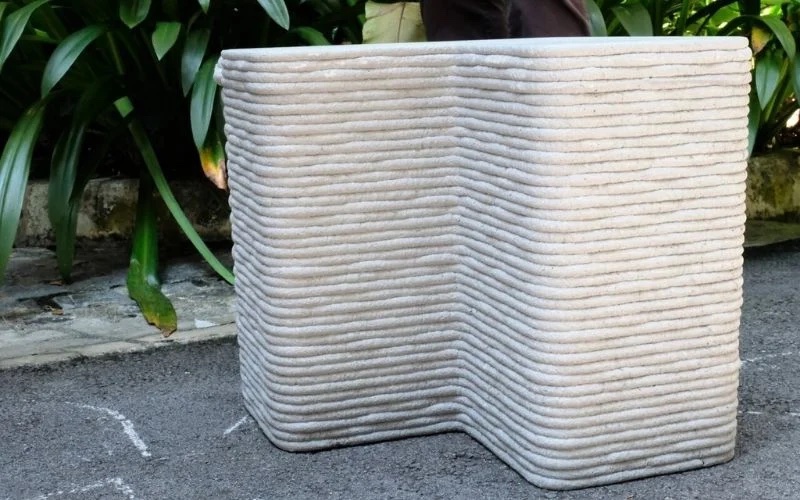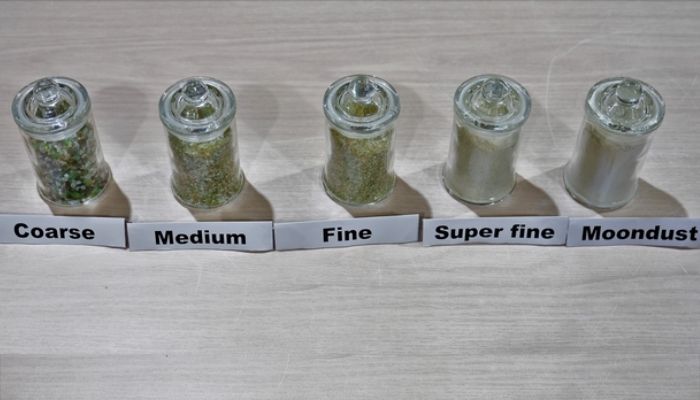NTU Singapore Researchers Are Using Recycled Glass for Sand 3D Printing

Faced with global warming, finding solutions to design environmentally friendly parts is now a problem at the core of many industries. This is why many scientists are working on this subject. Recently, researchers at Nanyang Technological University in Singapore (NTU Singapore) developed a new method to use recycled glass as a 3D printing material, a solution which they hope will help promote a circular economy. Through this innovation, the NTU Singapore research team hopes to 3D print everyday objects, and above all transform production processes.
For this project, the research chose glass as it can be 100% recycled without altering the quality of the material. With recycled glass, the team aims to replace sand in 3D printing processes, a material that is increasingly in shortage today, as its extraction causes heavy pollution. With their solution, they have managed to 3D print an L-shaped bench using a mixture of concrete and glass. The lead researcher of the study, Professor Tan Ming Jen from NTU’s School of Mechanical and Aerospace Engineering (MAE), explains, “The main challenge in formulating 3D-printable concrete mixtures is to figure out just how much of each component to add to obtain a structurally sound structure with minimal defects. Our team has come up with a feasible formula, demonstrating for the first time that glass can indeed be used to 3D-print a bench with excellent structural integrity..”

The components of the mix include recycled glass of various sizes (medium, fine and superfine), commercial cement, water and other additives (photo credits: NTU)
An Alternative to Traditional Materials
The goal of this project is to replace the use of sand with recycled glass. And with this 3D printed bench, they have demonstrated that it is possible to entirely replace sand. In order to use a minimum of material, the researchers conducted a series of tests to determine the optimal parameters of the recycled glass concrete mix for the printing process. In addition, the team explains that because glass is a hydrophobic material, very little water was used to design the concrete.
To design the bench, a 4-axis 3D printer was used, with a printing volume of 1.2 m x 1.2 m x 1 m. Though for the moment only a piece of furniture has been printed, the scientists hope in the future to democratize this process in the construction sector. And to do so, the NTU research team has partnered with Singaporean start-up Soda Lemon to 3D print larger structures and continue to optimize the printing process. You can find out more HERE.
What do you think of the new solution from Nanyang Technological University in Singapore? Let us know in a comment below or on our Linkedin, Facebook, and Twitter pages! Don’t forget to sign up for our free weekly Newsletter here, the latest 3D printing news straight to your inbox! You can also find all our videos on our YouTube channel.
*Cover Photo Credits: NTU Singapore






